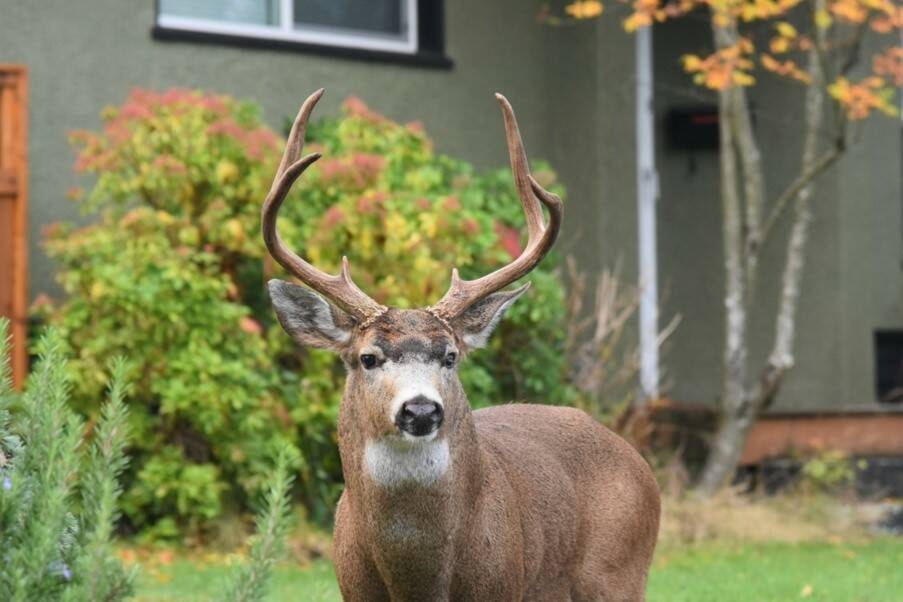As our long, sunny transition to fall continues, shorter, darker days have arrived. This puts the morning and evening commute at the same time that deer are also more active – at dawn and dusk.
Add to that the rain that will eventually arrive, not to mention ice, and the potential for collisions increases.
The realities of a coastal winter come at the same time that deer may not be as aware of their surroundings or of the potential risk vehicles present.
Younger deer, for example, may lack the “street sense” of the older does and bucks, so whether they’re simply unaware or get spooked by a dog or car, they can dart from bushes, gardens or between parked cars … and right into traffic. Once there, slick, busy streets and glare from headlights can leave them disoriented, explains Kristy Kilpatrick, with the Urban Wildlife Stewardship Society.
To help avoid collisions with deer (and other road users):
- Slow down & scan ahead – Especially important in areas deer are known to frequent, but good practice wherever you’re driving as children, dogs, deer and others can appear quickly and without warning.
- Anticipate deer + give them space – Deer rarely travel alone, so if you see one, others will typically follow. Give them time and space to pass safely.
- Drive defensively – In your vehicle, if a collision with wildlife seems imminent, avoid swerving, as this can cause more damage and personal injury. Instead, remove your foot from the accelerator and brake lightly, keeping the vehicle straight.
Just bucks being bucks
If dark days, rain and inexperienced younger deer weren’t enough, rutting season adds to this “perfect storm.”
Beginning later this month, rutting season has bucks become single-minded in their purpose, focused solely on tracking the scent of a doe, which can take them right into the road.
At this time, you might also see bucks tangling with trees, poles or anything else they can practice their bravado on, and later engaging in tussles with other bucks as they strut their stuff for the does. While it may appear aggressive, in fact, it’s just bucks being bucks and they typically have little interest in us or anything else.
As always, leave an escape route for deer that’s far away from yourself. Because dogs – no matter their size – are perceived as a threat, always check your yard carefully for deer before letting your dog out, and when walking, keep them leashed. If you encounter a deer, shorten the lead, stop your dog barking, if possible, and back away to give the deer more distance.
Esquimalt research update
As part of the Township of Esquimalt’s ongoing deer management efforts, the immunocontraceptive team is at work in the community until Oct. 20, administering IC to does, says Alina Fisher, a UVic PhD candidate and one of the research team working with Esquimalt’s deer management program, through University of Victoria scientist Dr. Jason Fisher and his Acme Lab.
Does in Esquimalt received their first IC dose in fall 2022. Research from the District of Oak Bay’s IC program, spearheaded by UWSS, showed a 61 per cent decrease in fawning rates after the first year.
Visit UWSS.ca for more information about avoiding collisions with deer and other deer behaviour tips. Learn more about the Township of Esquimalt’s deer management efforts here.
